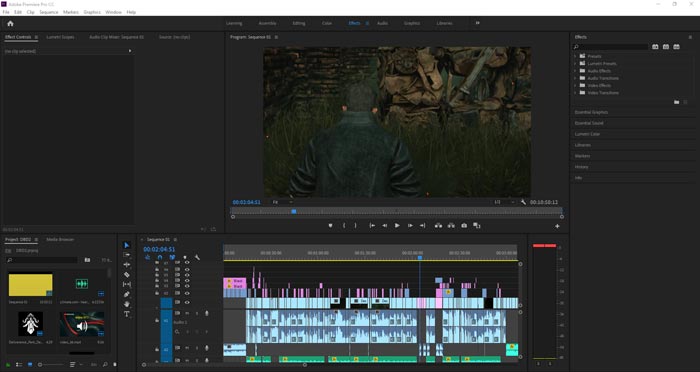
You can do this quickly by going to your video Bit-rate Encoding settings and changing it from the standard ‘VBR, 1 pass’ to ‘VBR, 2 pass’. For this reason it’s important to upload at the highest quality setting.

Tip: Social media platforms like Facebook, Instagram and Twitter automatically compress your video when you upload it. To save space on your computer’s hard drive, you may prefer to export it to an external hard drive. Once you've selected your export quality setting you can name your video and save it to your preferred location.
ADOBE PREMIERE PRO 2020 TUTORIAL 1080P
Generally speaking you will want to export your video at either 1080p HD (high definition) or 4K. These are designed to optimise your video for specific platforms, such as Facebook, Youtube, Vimeo and Twitter. You can do this by going to ‘File’, ‘Export’ and then ‘Media’.Ī menu will present you with a selection of different export quality options. Once you're happy with the sequencing and colour correction, you can start preparing it for export. Whether you choose a cross dissolve transition, where one clip dissolves into the next, or a ‘wipe’ transition, which gradually reveals the following clip, the goal is to enhance the overall flow of your video.ħ.

Transitions change the look and feel of your entire video by adding a style to the way each clip flows into the next. Add Dynamic Transitions to Make Your Video Flow Keep in mind however that you may still need to make a few small tweaks to some clips, as your exposure may vary from clip to clip.Ħ. This will speed up the editing process and also help achieve a more uniformed look throughout your final video. Once you have colour corrected your first video clip you can copy and paste the same settings to your other clips. But be careful, similarly to your exposure, contrast and colour settings, if you over-sharpen your footage, it can look unnatural. You may also want to adjust your sharpness setting if you have shot your video in C-LOG. For this reason, it's best to get your exposure right in-camera when shooting each video clip. Tip: It’s much more difficult to adjust exposure in video than in photography. Try not to overwork your exposure settings, as it can lead to blown out highlights or muddy-looking underexposed clips. By adjusting simple settings such as exposure, white balance, temperature, saturation and contrast, you can bring your video to life and get the look and feel you want to tell your story. This is where your effects and basic correction settings come in. When you first import your video files you may find that they look a little flat – especially if you have shot in C-LOG. Edit the Look and Feel of Your Video Clips Using the ‘Cut’ tool, you can shorten each clip, whether from the beginning or end, to make sure you keep the bits you want and discard the bits you don’t.Ĥ. This is a creative process and your sequencing should be tailored in a way that tells your story best. Once you have imported your video clips you can start dragging and dropping them onto your timeline in the order you want them to play back. Remember, however, that 4K video files take up a lot more storage space.

This means that the horizontal resolution of your clips will be roughly 4,000 megapixels wide, which will give you greater creative control. If you’d prefer to spend less time editing your footage, you may prefer to shoot your videos using a different Picture Style, such as Landscape, Portrait or Monochrome, as these require less adjustment in post-production.įor enhanced quality, and the option to crop in on certain parts of your video clips, it’s a good idea to shoot your videos in 4K. RAW photos in the sense that it allows you greater creative control at the editing stage. C-LOG video footage is comparable in a way to. Shooting your videos in C-LOG will give you a flat picture profile that's perfect for colour grading in post-production. This can be done simply by selecting, dragging and dropping the files directly from their location. MOV video files and import them into your video editing software. Whether you store your video clips on your computer’s hard drive or on an external hard drive, the first thing to do is locate all of your. Prepare Your Video Clips Ready for Editing Note: the instructor uses Adobe Premiere Pro in this demonstration, but you can follow the same basic process and tips whether you’re using Final Cut Pro or any other video editing software.ġ. In this insightful video tutorial, you'll learn the basics of video editing as we show you just how simple it can be.


 0 kommentar(er)
0 kommentar(er)
